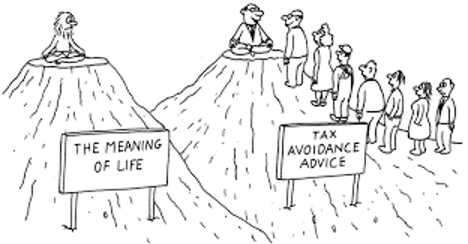
Is it really giving unto Ceasar what is Ceasar’s when you pay tax on your earnings to save up and buy an asset, then inflation increases the value of the asset so that if you sell it or gift it you have to pay more tax? It looks to me more like you are stuck on a rat’s wheel.
For most people the only assets they own that are not subject to Capital Gains Tax are vehicles, jewellery and collectables that cost less than $500 and personal use assets i.e. boats and caravans that cost less than $10,000. Any assets that you acquired before 19th September 1985 are also exempt from CGT. Though even if you think they are exempt you are still going to need to keep records to prove they cost you less than the threshold or that you purchased them before 19th September 1985.
Gifting an asset also triggers CGT. For example if you give your mother’s wedding ring to your daughter and your mother died after 19th September, 1985. If the market value of the ring at your mother’s date of death was more than $500 then you have to pay CGT on the difference between that market value and the market value when you give it to your daughter. Now this is assuming that it was a pre 1985 asset to your mother. If it was a post 1985 asset to the deceased then the test is the amount she paid against the $500 threshold and if you gift it you have to pay CGT on the difference between the price she paid for it and the market value when you gifted it. Of course, you will need records of the price she paid and the date!
I hear you say how on earth would the ATO know about this. You are probably right and you may be prepared to take the risk but what about the records for your children? How big will big brother be then? Do you want to drag them into the deception? Will they end up having to declare a larger capital gain because they have no cost base records?
A common misconception is that your heirs inherit your assets at their market value at the date of your death. This is not true, it only applies to pre 19th September 1985 assets and the property that was covered with your main residence at the date of your death. In all other cases your heirs inherit your cost base, they need your records!
Let’s look at the issues involved with property and shares. Sales of both these asset classes are already appearing on your ATO prefill. The ATO will aways know about sales of shares or property but there are no purchase price records in the prefill, just the sale proceeds. The onus of proof is on you, if you cannot show any cost base you will pay tax on the whole amount of the sale proceeds. Fortunately, with property the titles office can probably give you the date you purchased and the amount paid but that is only the tip of the iceberg when it comes to the cost base of a property. Section 110-25(4) ITAA 1997 allows you to increase the cost base by all holding costs that have not otherwise been claimed as a tax deduction. This includes insurance, interest, land tax, rates, repairs and maintenance which even includes cleaning materials. With good record keeping the cost base of a holiday home can dramatically increase.
This also applies to a property that you are using as your home but becomes exposed to CGT. You can include in the cost base all the expenses while you were living there, just as long as they have not been claimed otherwise as a tax deduction.
Even if the only asset you have is your home it can be exposed to CGT if it has been rented out. You can’t even use the 6 year rule if you rent it out before you live there. If you demolish the home and sell the land you lose your main residence exemption right back to the day you purchased it unless it was accidentally destroyed. If you are living overseas when you sell your home you will lose your main residence exemption right back to the day you first purchased the property. Same if you die while living overseas for more than 6 years. The main residence exemption only allows you to cover up to 2 hectares of land, the rest will be subject to CGT.
The very first step in qualifying for the main residence exemption is proving to the ATO that you lived in it, established it, as your home. Examples of where this has not been the case:
- Coming home for a holiday while living and working overseas just means you are holidaying in the property not establishing your main residence
- A miner stayed at his sister’s house on the short breaks and got his mail sent there too because he only went home in the longer breaks. The electricity at his home was connected in his girlfriend’s name. The ATO was successful in arguing that he had not established it as his home so no main residence exemption.
- Mum and Dad built a house and sparsely furnished it but spent a lot of time helping at their daughter’s house. The ATO presented an electricity bill in court to show that they could not have spent much time there as not much electricity was used. It was found that they did not establish the property as their main residence.
Assets you acquired before 19th September, 1985 are exempt from CGT. Make sure you have the records to prove that the asset is pre 1985. Further, if that asset is jointly owned and you are the surviving owner then you have probably acquired half of the asset after 19th September, 1985 so you need to keep records starting with the market value of the asset at the date of your joint owners death.
Never assume that there is a record somewhere of your purchase of shares or units in unit trusts. This is a common problem with deceased estates. Records get lost in takeovers and demergers. Returns of capital need to be recorded. Even if it is tracible the accounting fees to find the information may exceed the value of the asset. Dividend reinvestment plans mean you need to record all those little transactions twice a year. How time consuming will it be for anyone to find this if you don’t record it? Even if you are not sure how to record it in the spreadsheet at least scan the notification document and attach it to the spreadsheet.
Now if the thought of getting together all this information is giving you the horrors. Just think how impossible the task will be for your executor. There is no avoiding it, the work has to be done and systematically working through it yourself is the most cost-effective and comprehensive way. Make a start, every entry you make will help. Ideally scan your documents and attach them to a spreadsheet for each asset then distribute copies amongst your heirs and give a copy to your executor.
CGT records are also important to estimate the after tax value of your assets so that you are bequeathing assets amongst your children fairly as some will have a bigger tax bill, that your heirs will inherit, than others. Leaving a will that instructs your executor to sell all assets and distribute the proceeds evenly will make the tax collector a major beneficiary of your estate. If instead you transfer assets through your will no CGT is payable at that point if the heir is a resident of Australia for tax purposes. Though the heir will inherit your CGT liability unless the asset was your home at date of your death.
If you are unsure of how to record the necessary records or need some guidance on what is relevant we have designed a package of spreadsheets for all assets you are likely to hold, complete with full instructions and even a CGT estimator.
https://www.bantacs.com.au/shop-2/getting-your-affairs-in-order-made-simple/
This video provides an example:
 Julia's Blog
Julia's Blog